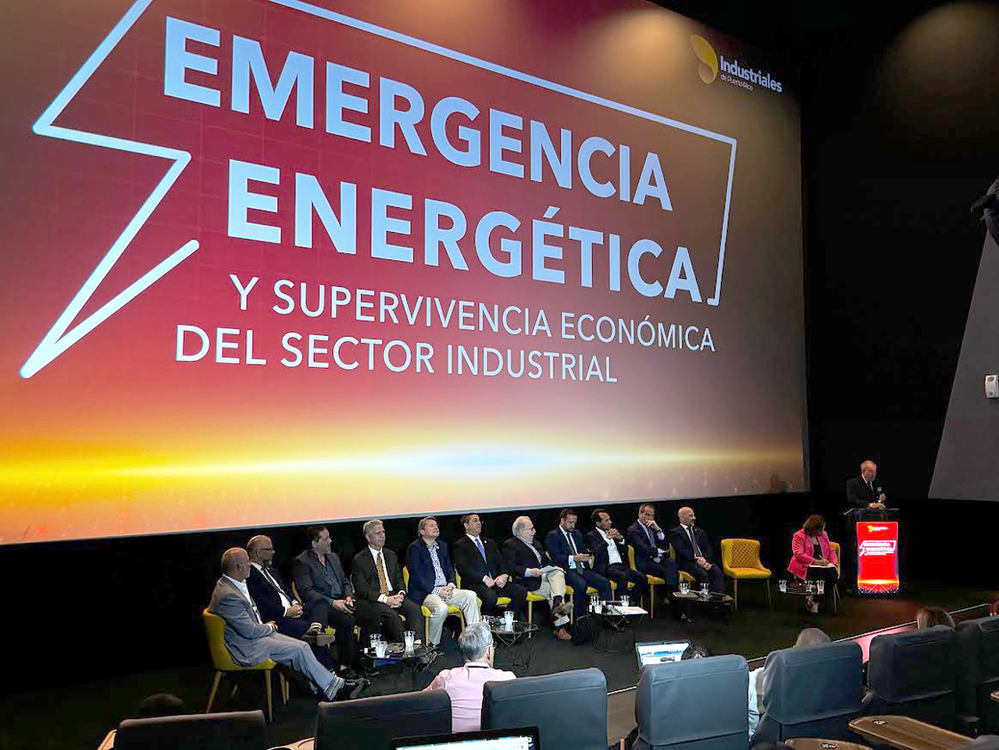
---
The stabilization strategy for Puerto Rico’s electric grid, introduced to the Puerto Rico Energy Bureau (PREB) by LUMA Energy, Genera PR, and the Puerto Rico Electric Power Authority (PREPA), has received backing from business organizations; however, civic entities have criticized it for prioritizing centralized power generation from plants rather than electricity generated close to the point of consumption or through distributed generation.
Electrical engineer Agustin Irizarry Rivera expressed concern regarding a decision by the Financial Oversight and Management Board along with the PREB to remove PREPA’s authority over hydroelectric and irrigation systems. PREPA reported that it has a hydroelectric capacity of 101.7 MW, with only 30.7 MW currently operational. Additionally, PREPA requested $858 million from FEMA for projects projected to take a decade to complete.
Irizarry remarked on the troubling fact that PREPA has only 39 staff members managing the hydroelectric system. “In my view, both the government and the Oversight Board place too much emphasis on hydroelectric generation while overlooking the vital role of reservoirs, flood control, and irrigation systems in agriculture support. The shortage of trained personnel to oversee the reservoir, irrigation, and hydroelectric systems is an emergency and poses a risk to citizens. Is there adequate skilled personnel to manage the reservoirs and ensure flood control? If they are removed after 2024 or in 2025, who will take over from the existing managers?” he posed.
The Manufacturers Association, the Hotel and Tourism Association, the Restaurant Association, and the Chamber of Commerce expressed their endorsement of the stabilization plans.
Genera PR, the operator of PREPA’s legacy power plants, proposed acquiring emergency generation facilities that can utilize natural gas and converting oil plants to natural gas, aligning with the expectations of its parent company, New Fortress Energy (NFE), which anticipates an increase in natural gas use in Puerto Rico. The Genera Plan specifies an urgent need for over 550 MW of additional generation temporarily for the Puerto Rico grid.
“Genera’s Electric System Stabilization Plan features a diverse approach aimed at ensuring continuous, reliable energy production while incorporating renewable sources. The primary strategy of the plan consists of reconfiguring existing power stations into multi-purpose grid support hubs, incorporating generation and energy storage units in strategic locations throughout the island. This setup will not only improve efficiency and lower production costs but also provide room for future growth to accommodate the evolving demands of the island,” stated the business groups.
“Furthermore, we urge the Energy Bureau to collaborate with the government and private sector to advocate before the US Congress to secure essential funding for the lease and operation of temporary power sources. Time is crucial; the sooner the Energy Bureau initiates the leasing process, the quicker we can get the units up and running in Puerto Rico,” the business groups asserted.
Additionally, they stressed that the Energy Bureau should extend the current deadline of December 2025 for the FEMA generators presently installed on the Island.
Irizarry Rivera, a former citizen representative on PREPA’s governing board, pointed out that LUMA’s stabilization efforts, such as pole replacements, meter changes, and automatic sectionalizer installations, do not adequately tackle the most pressing issues they have identified. For instance, LUMA mentioned having transformers out of service, which could facilitate service continuity if operational; issues in sections of lines linked to 75% of service interruption minutes; and a lack of effort to fully integrate the 1,100 megawatts of emergency power corresponding to batteries installed in residential areas.
He suggested that Genera should face penalties for including repairs in its stability plan that should have been completed already and for proposing new batteries that would charge overnight using methane.
Meanwhile, organizations such as El Puente, Red Continental Cristiana por la Paz, Comité Dialogo Ambiental, Inc., Comité Yabucoeño Pro-Calidad de Vida, Inc., Organización Boricua de Agricultura Eco Orgánica, Inc., Alianza Comunitaria Ambientalista del Sureste, Inc., Mujeres de Islas, Inc., Frente Unido Pro-Defensa del Valle de Lajas, Inc., Mayagüezanos por la Salud y el Ambiente, Inc., Asociación Puertorriqueña de Profesores Universitarios, Recinto de Rio Piedras, Sierra Club, Cambio, and others advocated for the utilization of distributed energy and renewable energy systems over fossil fuels.
They argued that centralized power generation facilities relying on transmission and distribution infrastructures, including poles, towers, and substations, are less reliable compared to solar energy installations on rooftops or at points of consumption, as well as distributed storage solutions.
Rather than being ineffective during severe weather, distributed solar systems perform well amid storms. The centralized transmission and distribution framework in Puerto Rico, associated with fossil fuel plants, renders it exceptionally vulnerable. The adoption of renewable energy microgrids could bolster the reliability and resilience of the electric grid. The reliance on imported fossil fuels for energy generation diminishes Puerto Rico’s energy security, exacerbating the rising costs of electric service. Puerto Rico currently has one of the highest energy rates in the United States, posing challenges in managing the energy burden. Distributed renewable energy systems hold the potential to reduce costs and volatility in electricity service pricing, they concluded.
